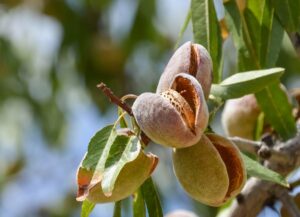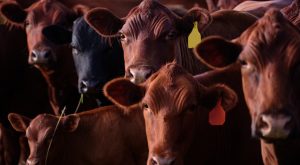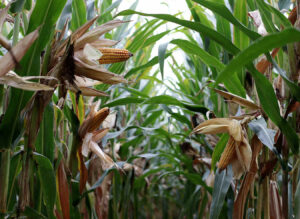Álvaro García
With 362 million metric tons produced worldwide soybeans are the main oilseed crop produced nowadays. The main co-product obtained once oil is extracted, is soybean meal (SBM) at 250 million metric tons worldwide.
Soybean meal is mainly used as livestock feed because of its high protein and digestible energy contents. The first steps in the oil extraction process usually involve the cracking and heat treatment of the seeds, and their physical separation of their outer coating, which is known in the animal feed industry as soybean hulls (SBH).
Once the oil is removed by mechanical or solvent extraction, the product that’s left is the 48-50% crude protein SBM. Depending on the market demand, the hulls can be added back to the 48-50% protein SBM to obtain the 43-44% protein SBM. Although when added back to the oil-extracted mash the SBH dilute the energy concentration of the original SBM, they are by themselves a very good feedstuff, particularly for ruminants.
Characteristics of soybean hulls
They have 11-15% protein, they contain cellulose (29–51%), hemicelluloses (10–25%), and pectin (4–8%), and are low in lignin (1–4%). Their particle size, however, and particularly when fed in large amounts, allows them to pass through the digestive tract of the ruminant relatively fast which reduces their utilization.
There have been studies that have shown that improving the rumen fiber mat with relatively coarser fiber, slows down the SBH rate of passage and improves their utilization. This strategy though might be a constraint particularly in weaned calves since feeding high concentrations of roughage is to be avoided to increase the energy density of their diets. This has resulted in some experiments reporting reductions in average daily gains in calves fed higher concentrations of SBH.
The physical form of the feed apparently also plays a role, with texturized feed decreasing more intake and gain than ground or pelleted feed. The problem was further compounded in those experiments by feeding finely chopped forages and replacing grain as SBH inclusion increased.
Other results have shown that SBH fed to calves in a TMR rather than feeding them individual feeds (component-fed) increased overall fiber digestibility. The synergistic effect on digestibility between SBH and forage fiber has already been demonstrated in mature dairy cows, it remains to be seen if it is also valid for calves, and which are the optimum amounts to feed to optimize growth performance.
An experiment was conducted (Mitchell et al., 2021) to address this question in weaned dairy calves, by verifying the effect of replacing SBH pellets with grass hay on growth, intake, total-tract digestibility, and rumen microbial nitrogen production. The study was conducted in 16 male calves, which entered the trial once they reached 8 weeks of age. The treatments consisted of four diets fed as total mixed rations containing 76% grower feed and 24% of different amounts of SBH pellets and chopped grass hay.
- 0% hay, 24% SBH (0GH)
- 8% hay, 16% SBH (8GH)
- 16% hay, 8% SBH (16GH)
- 24% hay, 0% SBH (24GH)
Calves received 6 L/d of pasteurized milk through 5 weeks of age and 3 L/d until weaning at 6 weeks. They also had water and a texturized starter (20% CP:35% starch) free choice from 3 days of age through 8 weeks of age. A one-week transition phase (8 to 9 weeks of age) followed where calves were offered a 50:50 blend of texturized starter with their assigned dietary treatment. Starting on week 9 and through week 16 calves received the whole treatment diet. Diets were fed such that they would clean the bunk to minimize refusals and sorting.
Intake and average daily gain of weaned calves
Calves offered 0GH and 8GH had a 20% greater intake which also reflected on their average daily gains which were 1.23, 1.27, 0.89, and 0.71 kg/day for 0GH, 8GH, 16GH, and 24GH, respectively. Feed efficiency was also greater for calves fed 0GH and 8GH compared with 16GH and 24GH. Calves fed 16GH and 24GH apparently had trouble to adapt to this high forage diet which negatively impacted their average daily gain, particularly between 13 and 14 weeks of age.
Relationship between forage and rumination time
Fiber digestibility (NDF and ADF) was greater in calves fed 8GH, which of course also led to the highest estimated microbial nitrogen yields. As could also be expected, as forage increased in the diet so did rumination time, which was 2.75, 6.89, 7.18, and 8.16 hours/day for 0GH, 8GH, 16GH, and 24GH, respectively.
On average the inclusion of grass hay more than doubled (2.5) rumination times compared to those calves fed no hay. It is likely that the increase in digestibility of calves fed 8% SBH was the result of a slowed rate of passage; these calves also had increased microbial nitrogen yield and the most efficient nitrogen use.
Conclusion
What can be concluded from this experiment is that replacing SBH with grass hay above 8% of the diet decreased performance of recently weaned calves. The results also infer that rumen function and feed efficiency were optimized with the inclusion of 8% grass hay with 16% SBH compared the higher grass hay inclusion combinations.
Reference
Mitchell LK, Chishti GA, Dennis TS, Heinrichs AJ. Replacing soybean hulls with grass hay on growth, intake, total tract digestibility, and rumen microbial nitrogen production of weaned Holstein dairy calves from 8 to 16 weeks of age. J Dairy Sci. 2021 Feb;104(2):1714-1727. doi: 10.3168/jds.2020-18935. Epub 2020 Dec 11.
© 2021 Dellait Dairy Knowledge Center. All Rights Reserved.









